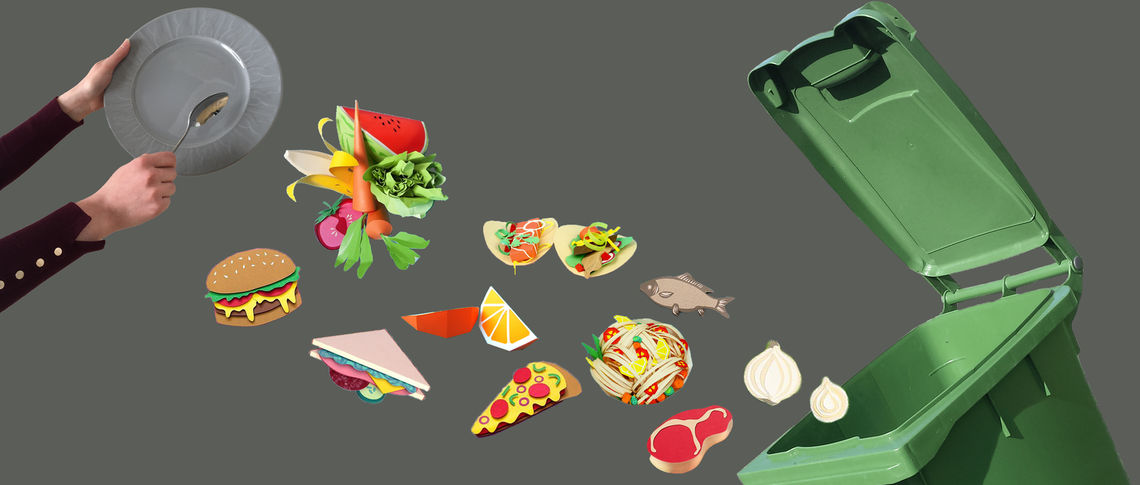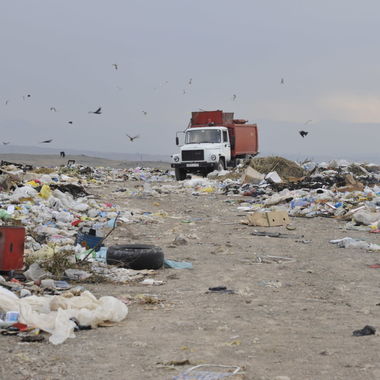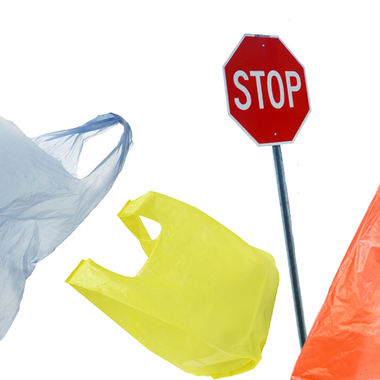According to the United Nation’s Food and Agriculture Organization (FAO), more than 1.3 billion tons of food gets lost or wasted every year. More than 820 million people around the world don’t have enough food to eat. Despite this alarming data, people continue to waste food.
Lilith Hakobyan, the Education Subprogram Manager with the Children of Armenia Fund (COAF) used to look out for leftover food on others’ plates when she went to cafes or restaurants in Yerevan. If she noticed any, she would approach the staff, ask to take away the food in a container and pass it on to a person she knew was in need of food. Unfortunately, she later lost contact with the person and didn’t know who else to give the food to. For her last birthday, Lilith asked her friends, family and Facebook network to donate money to the gofundme.com page she started for a project called FREEdge.
The project’s objective is to purchase a refrigerator and place it in a public park in downtown Yerevan and fill it up with free food. According to Lilith, it will be filled with leftover food from restaurants and by local residents who want to contribute. “Volunteers on bicycles will collect leftovers from restaurants. Additionally, anyone who eats out can bring their leftover food and place it in the refrigerator,” she explains. “There are already several restaurants interested in taking part.”
Lilith’s aim is to collect $750, and she is already halfway there. While her aim is to help feed hungry people, she is equally focused on creating a culture of respect toward food. Lilith found that, in many countries around the world, there are community refrigerators placed in communities and near universities, allowing residents and students to get free food, reducing food waste and protecting the environment. In fact, one of the biggest contributors to global greenhouse gas emissions is food waste. Food that ends up in landfills produces methane, a greenhouse gas 25 times more potent than carbon dioxide, as it decomposes. According to the FAO, food wastage impacts climate, water, land and biodiversity.
“We don’t think twice about throwing away our food. We are embarrassed to ask restaurants for a doggy bag, which is a shame,” says Lilith. “I have long since made it a habit not to leave any food on my plate. If I can’t finish it, I take it home with me.”
The principles of a circular economy and recycling apply to organic waste as well. Food safety expert Davit Pipoyan, from the Food Risk Assessment division of the Center for Ecological-Noosphere Studies at the National Academy of Sciences, outlines how scraps from the dinner table makes up only a small percentage of organic waste.
“Organic waste occurs from the early stages of food production,” explains Pipoyan. “I’ve worked in family farming, where we would slaughter our livestock on our property, resulting in an enormous amount of [animal byproduct] organic waste.” Pipoyan says that today, developed countries have moved away from private livestock slaughter to licensed slaughterhouses. “When animals are butchered in slaughterhouses, nothing is wasted. Even the blood is collected under sterile conditions and repurposed. The blood byproduct is used for blood sausages, blood meal, glue, etc.” he explains and adds that if there is state-level support for proper, licensed slaughterhouses, Armenia can drastically reduce the waste in its agri-food sector. In fact, Armenia’s government has moved to regulate livestock slaughter, requiring farmers to have their cattle slaughtered only at licensed slaughterhouses.
Even though most developed countries have state-level oversight over food production, there is still much food waste. Issues pertaining to food quality and safety have to be a top priority for governments.
“As a food security specialist, I am skeptical about having a refrigerator downtown; several issues need to be discussed,” says Pipoyan. “Who is going to check the safety of the food in the refrigerator? Even if this is a well-meaning initiative and a precedent that aims to help people, if there is no oversight, then it can also be dangerous. If I take food from my house, which was to be thrown away, who can guarantee that it’s suitable for a person to eat?”
Lilith Hakobyan says that, even though the gofundme.com page states that people can leave their own household items in the refrigerator, she has reconsidered her decision on that front. Lilith is putting her hopes on restaurants, which can ensure food safety as part of their social responsibility and ensure the food from their kitchens being placed in the refrigerator is fine to eat.
“I plan to collect a group of volunteers that will help check the safety of the food placed in the refrigerator,” explains Lilith. “I’m putting my hopes on our citizens’ social responsibility and I’m hopeful that they will help check the contents of the refrigerator. I know that this has to be regulated on a daily basis. That is why I’m now looking into which restaurants we can approach. First, we can place the refrigerator near them, and, second, they will help maintain it.”
No organization or state body has surveyed how much food is wasted in Armenia. Many countries have recycling programs for organic waste. Even leftover sour cream can be turned into biogas and used to produce electricity. If it was possible to carry out both organic and plastic recycling in Armenia, there wouldn’t be as many landfills and junkyards.
Pipoyan says he rarely throws out food. “My father, who is responsible for grocery shopping in our household, knows very well how much food our family needs,” he explains. “For me, only expired food that cannot be recycled is an exception.”
In the German city of Essen, there is a logistics center that works with food waste. Pipoyan has visited it and discovered the cultural characteristics of food recycling in Europe.
“In Europe, it’s impossible to find an open supermarket on a Sunday,” explains Pipoyan. “This is a special strategy, which allows people to use the food they have left over at home and not do excessive shopping. And this method works because, when people buy groceries over the weekend, they are prone to shop more than is necessary.” Pipoyan believes that successive Armenian administrations have fallen short in this respect. “Our government does not follow food trends and does not want to look into how food waste is being tackled by other countries, how they recycle organic food, etc. And this is a field that is impossible to supervise without the support of the state,” he says.
Mario and Maria moved to Armenia from Italy with their 9-year-old son a year ago. They have noticed that Armenians buy a lot of food, especially during weddings and special events. They also notice how much food is thrown away because people can’t consume it all.
“We lived in China for many years and we learned something very important there. If you go to any restaurant, cafe or any place that serves food, you have to take home whatever is left on your plate,” says Maria. “Some of our Armenian friends say they are embarrassed to do that, which is natural if your country does not have that culture. Before moving to China, we also thought that it was shameful and you shouldn’t take your food home with you. But now, of course, we take our food home with us because food is a blessing and you shouldn’t throw it away, especially when there aren’t any recycling companies.”
Activist freegan Mayrikianush is even willing to eat food that has fallen on the floor so that it doesn’t end up in the trash. She is proud that she has only thrown away food three times in the last two years, only because it had gone bad. Freeganism (from “free” and “vegan”) is an ideology of limiting one’s participation in the conventional economy and minimizing consumption of resources. Freegans recover wasted goods like food.
“Throughout the years, I slowly started growing concerned over food based on clear facts,” explains Mayrikianush. “If we can imagine for one moment how many people around the world need food, how many children die because they didn’t have enough to eat, I think we would treat the things we have with respect and responsibility.”
During get-togethers with friends, if she notices that there’s food left on somebody’s plate, Mayrikianush has no problem offering to finish it. “One time, I was passing by Raykom [a district north of downtown Yerevan] when I noticed that there was food hanging from a tree next to a restaurant,” Mayrikianush says. “I picked it up and ate it. I assume the restaurant employees hung it there because they did not know where else to take it. So if there is a large community refrigerator in the city, I would take advantage of that with great joy because all freegans would do that.”
Mayrikianush says that, when she sees food going bad, she finds a way to reuse it and give it a second life. For example, leftover fruits are used to make compote or jam, yogurt is used to make baked goods, etc.
“Once, there were chickpeas that were left over for several days and I realized they were starting to smell. I spiced and fried them and ended up with a new dish,” she explains. “At the end of the day, if there is food that, for one reason or another, you’ve decided to throw away, you can give it to your neighbor or relative. For example, I feed street dogs and birds.”
“The ideology of freeganism is very important to me,” Mairikianush says. “Capitalism encourages you to throw out food and buy something new. This is how producers get rich. The main idea behind freeganism is to end consumerism and avoid buying food. For example, we have to try growing things ourselves, preparing them ourselves and minimizing what we buy at the store.”
There are no studies on food waste on the official webpage of Armenia’s National Statistical Committee. Instead, you can find different statistical data on poverty and goods consumption in Armenia.However, a 2018 Strategic Review of Food Security and Nutrition in Armenia conducted by the UN World Food Programme (WFP) includes a short summary on food waste:
The national self-sufficiency levels of main food products increased during 2008-2015; the self-sufficiency for potatoes, vegetables, fruits and berries, grapes, eggs, sheep and goat meat and fish is already reached. Thus, these are the main types of food exports from Armenia. Nevertheless, Armenia still imports more than half (50.5 percent) of the supplied wheat, 42 percent of legumes, 78 percent of poultry, 42 percent of pork, 92 percent of vegetable oil. The self-sufficiency of wheat increased in Armenia by 24 percent (from 39.8 to 49.5 percent) since 2008. Meanwhile, the sown area of wheat increased in the same period by 22 percent and covered 25 percent of total arable lands available in the land balance. The productivity of wheat per hectare increased by 40 percent since 2008. There is a significant increase in lands covered by wheat and wheat productivity.
According to the national food balance, 2,846 kilocalories of dietary energy can be consumed daily from the available food for an average Armenian. Cereals (mainly wheat) provide about 52 percent of the calories available for consumption while livestock products (including meat, milk, eggs, and fish) provide nearly 20 percent. About 66 percent of the available for consumption dietary energy per person, which is about 1,870 kilocalories, is available from domestic production. On average, five percent of the available food is wasted in Armenia. The loss – due to lack of markets and storage facilities – is the highest for vegetables (21 percent), melons (15 percent) and potatoes (8.5 percent). There is a significant discrepancy in the macro- and household-level data on daily energy consumption in Armenia. The quantities of food energy available for consumption and the actual food consumption by an average Armenian significantly differ.
Whether through alternate lifestyles, doggy bags, feeding the birds or agricultural regulations, we can all express our gratitude for the blessings we enjoy by doing our part to tackle food waste.









EVN Report welcomes comments that contribute to a healthy discussion and spur an informed debate. All comments will be moderated, thereby any post that includes hate speech, profanity or personal attacks will not be published.